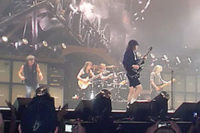
I get asked to visit companies and “diagnose” why their behavioral safety program has “lost steam” or never got off the ground to begin with. Inevitably I find the whole shebang is being run by the safety department and a few anointed safety enthusiasts who do all the observations.
Or it is dumped on supervisors who have observations cards to do on top of their other mound of paper. Employee involvement is nil.
While this might seem the most reliable way to institute a behavioral safety program, it’s tough to see its undesirable effect from the inside of the operation.
“I’ve got a story…â€
I got a story for you that will make this point. I was in a rush. My flight was a hour late arriving in Chicago and I had a 40-minute drive to get to a safety meeting that was 50 minutes away, and I still had to get my rental car. I got off the huge rental company shuttle bus and made sure I got in front of the line at the counter. With rental papers in hand, I found the car on the lot, put my belt on and headed for the exit. The massive labyrinth of a parking lot was segmented with roads and I had to trust that the “exit” signs would get me to civilization. After a dozen turns I finally drove up to a “T” intersection. The exit booth was to the right of me and beyond that was freedom. I eased into the right lane to yield and turn right. But I had to stop because one of those huge airport shuttle buses covered with the rental car company’s logo had the right of way as it passed ahead of me toward the exit.While I was waiting for this TryceraBus (scientific name) to pass, another identical to it drove right up beside me… and I mean right beside my driver’s window. I literally could have rolled down the window and patted the axel of the four-foot diameter wheel of this thing. It was unnerving but I figured the driver did this all the time.
The way was now open to proceed. But when I was taking my foot off of the brake I heard the low belching of the bus next to me. Out of the side of my eye I notice this big wheel turn and then start moving. The tire was crushing into my car. It first destroyed the side mirror in an impressive display of glass. The tire’s next destination was the body of the car, which started crushing just as easily.
I honked and waved my arms at the oblivious driver who I could see through the glass door panels. He looked at me with wide eyes and stopped in time to prevent further damage.
Do you think I was pissed off?
No… it was not my car. Startled, yes; a bit shaken, yes. But I wasn’t in any real danger. The fact is that it was their car, in their parking lot, being beaten up by their bus. Honestly… I thought it was kinda cool. How many times do you get to sit in a car while it is being slowly crushed?
Rest of the story
When employees are not active participants in the safety program, involved in its design, ongoing implementation, and evaluation in some way, well, frankly…it’s not their car.So when the program starts to derail, through lack of budget, disappearing management support, or just plain complacency, they may think it’s kinda cool (yes, the same people the program was designed to help). Rumors fly, jokes and ribbing are heard… “told ya so”… “flavor of the month.” It’s not theirs. Employees (supervisors and leaders too) may actually enjoy seeing it get crushed.
But back to the rental car lot… if I was in my car, with my kids? Yeah I’d be pissed. I often think about it. I imagine instead of simply assuming the driver of the bus had seen me, I would have perhaps honked and tried to get his attention. We do that kind of action to protect the things we value.
It’s the same with safety programs and it’s based on a straightforward psychological principle that Ed Deci and Robert Ryan called “Self Determination.” It’s one that Scott Geller talked about in his book “The Participation Factor” and a concept I’ve researched for two decades and wrote about in my own book. Sun Tzu talked about the same principle in his epic “Art of War” written more than 2,000 years ago. He states the way to defeat your enemy most effectively is not by force of arms. Instead, invite them to take part in your conquests. They will not destroy what they helped build. Most quality improvement movements, like TQM, stress employee involvement.
Modern management psychology research data shows “engagement” correlates highly with safety outcomes. Think about an employee-owned safety program. We can talk about pride in ownership. We can talk employees knowing firsthand where hazards exist, where at-risk behaviors occur, and where attitudes affect safe work practices. But I want to talk about protection.
Union-owned BBS
I want to talk about another operation I recently visited in Detroit. Marathon Petroleum Company LP, Michigan Refining Division, invited a colleague and me to their site to understand why they have one of the best-in-practice behavioral safety programs according to the Cambridge Center for Behavioral Studies (you can read about them at www.behavior.org). At the gate we met an hourly employee named Rod Dagher, we interviewed members of their Circle of Safety (COS) team… all employees. It was there I saw ownership.This was a Teamsters Union workforce. Some unions advise against behavior-based safety to their members, but this outpost of the Teamsters owned it. It was their car and if anything threatened it, I imagine they would be pissed. The evidence was obvious. When anything threatened the program or the safety of the workforce (like turnarounds or new construction that brought hundreds of contractors on-site) the COS teamed with management to bring to bear resources and hundreds of hours of effort to protect and succeed together. It was their car so they proactively made it work. They worked with leaders to grow it. And they waxed it up real well because they were proud.
Just like a fine Detroit-made Mustang.



